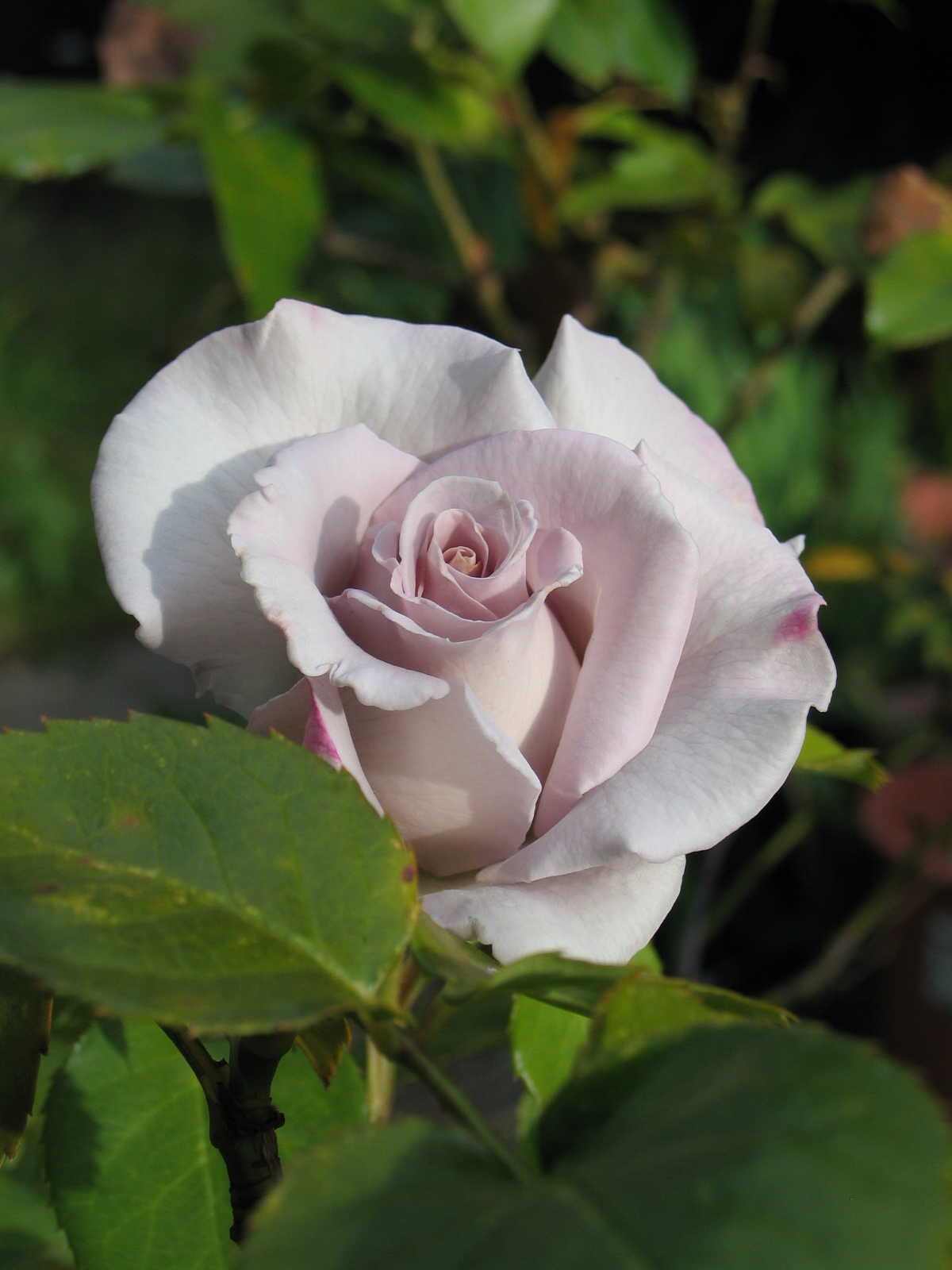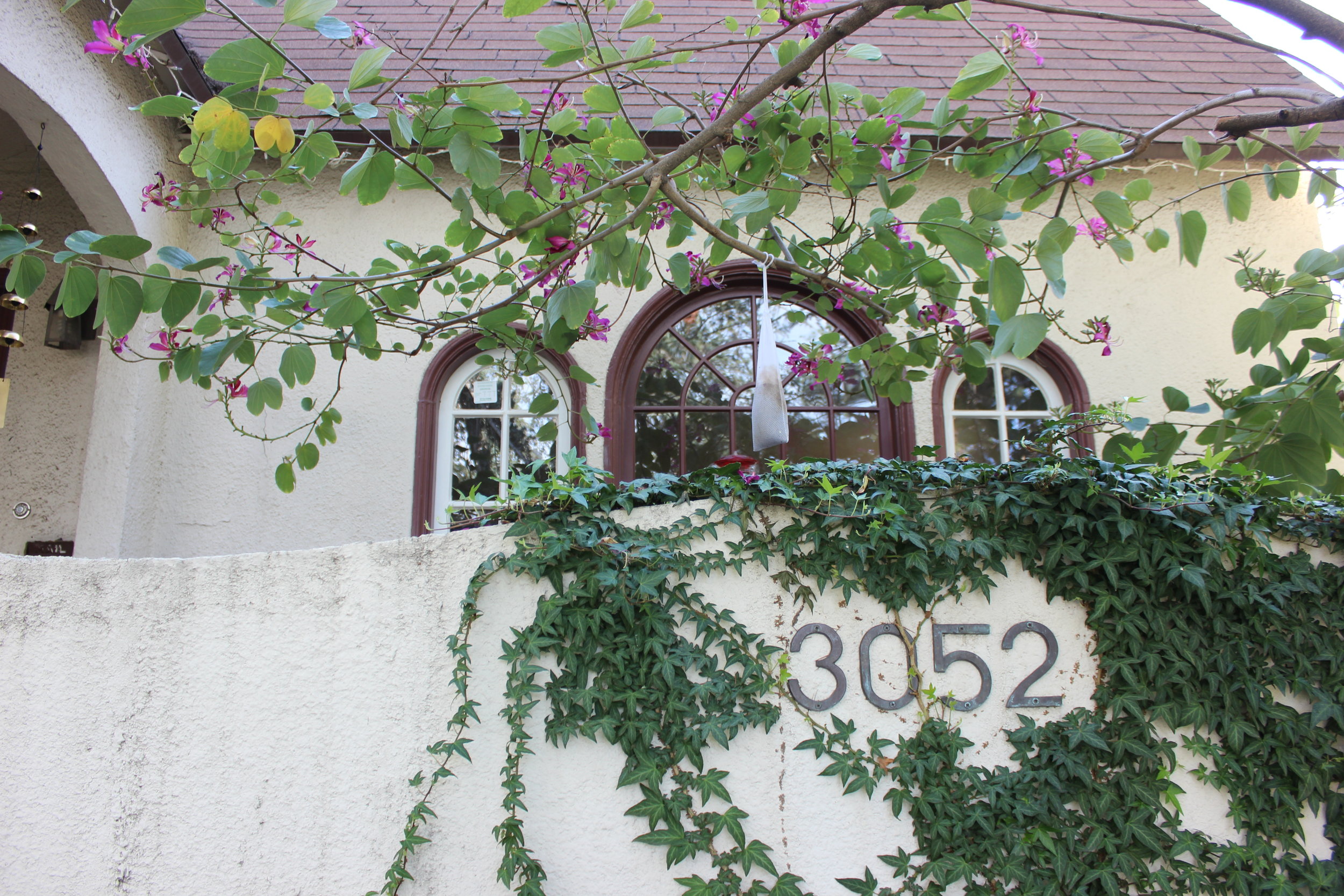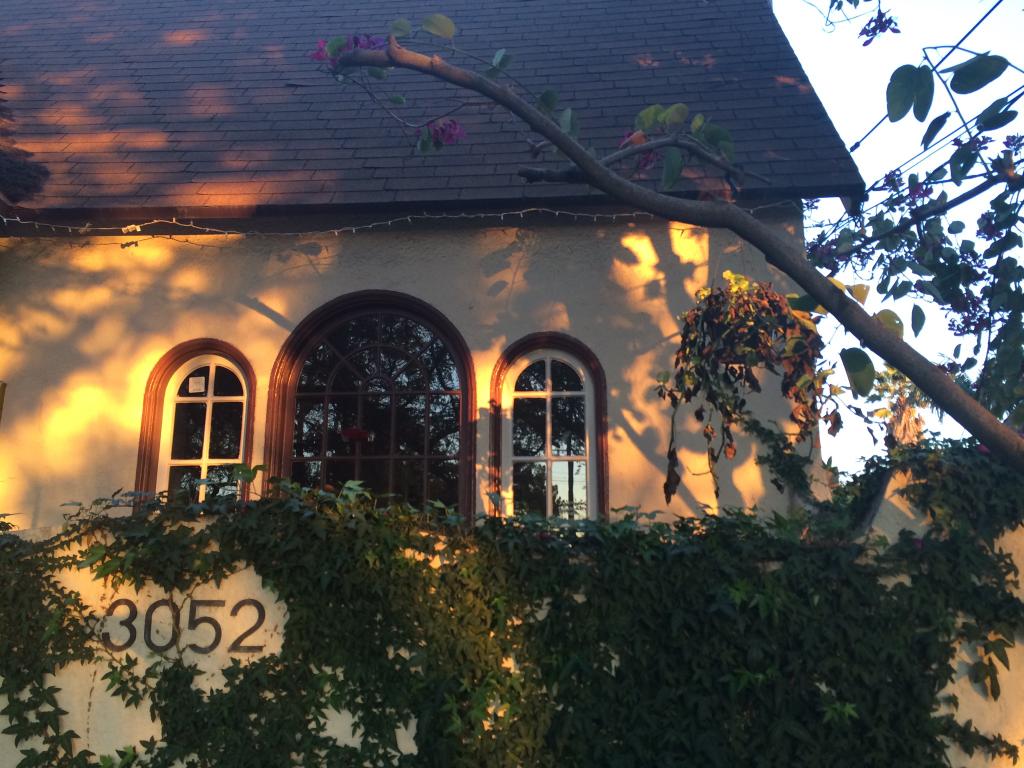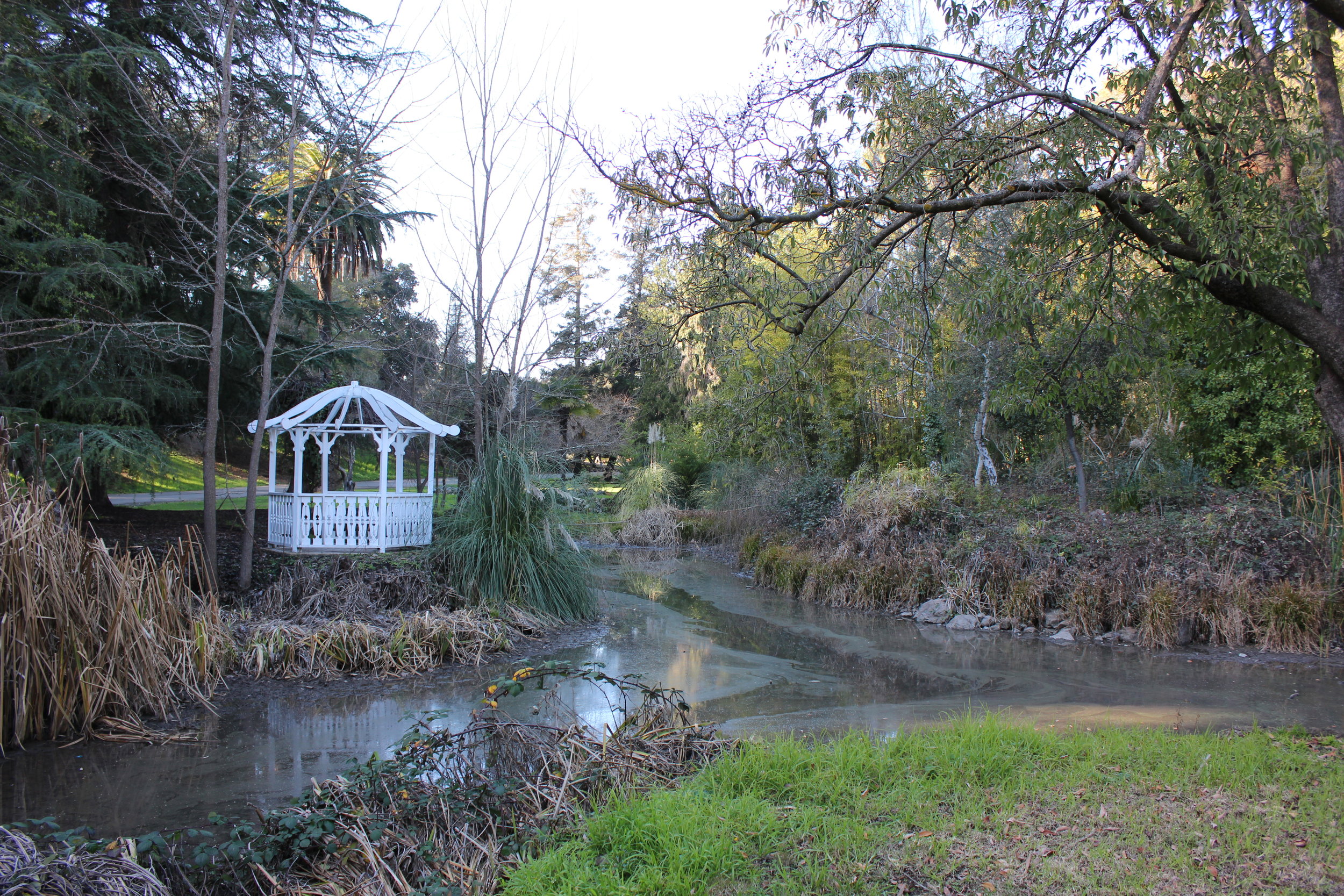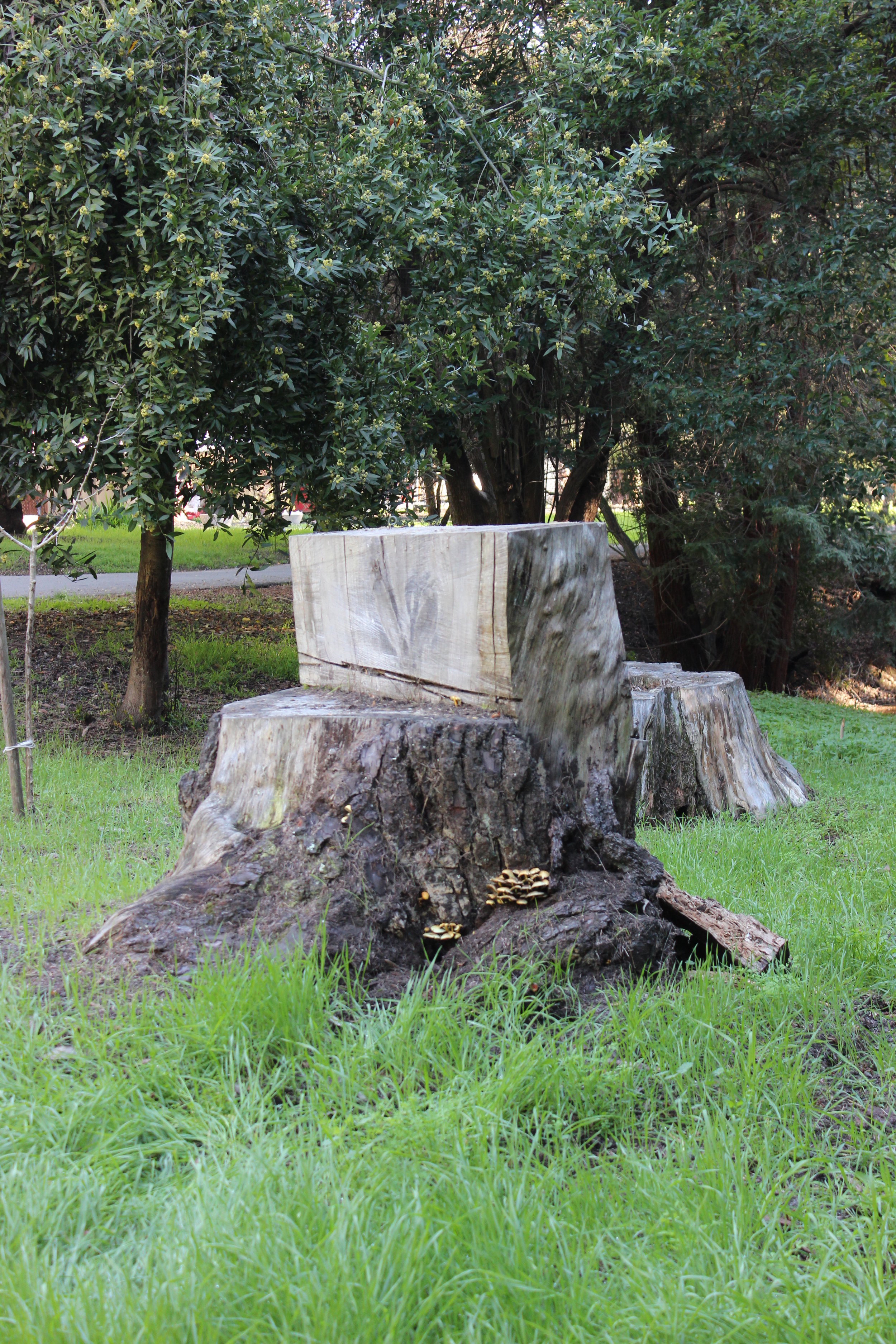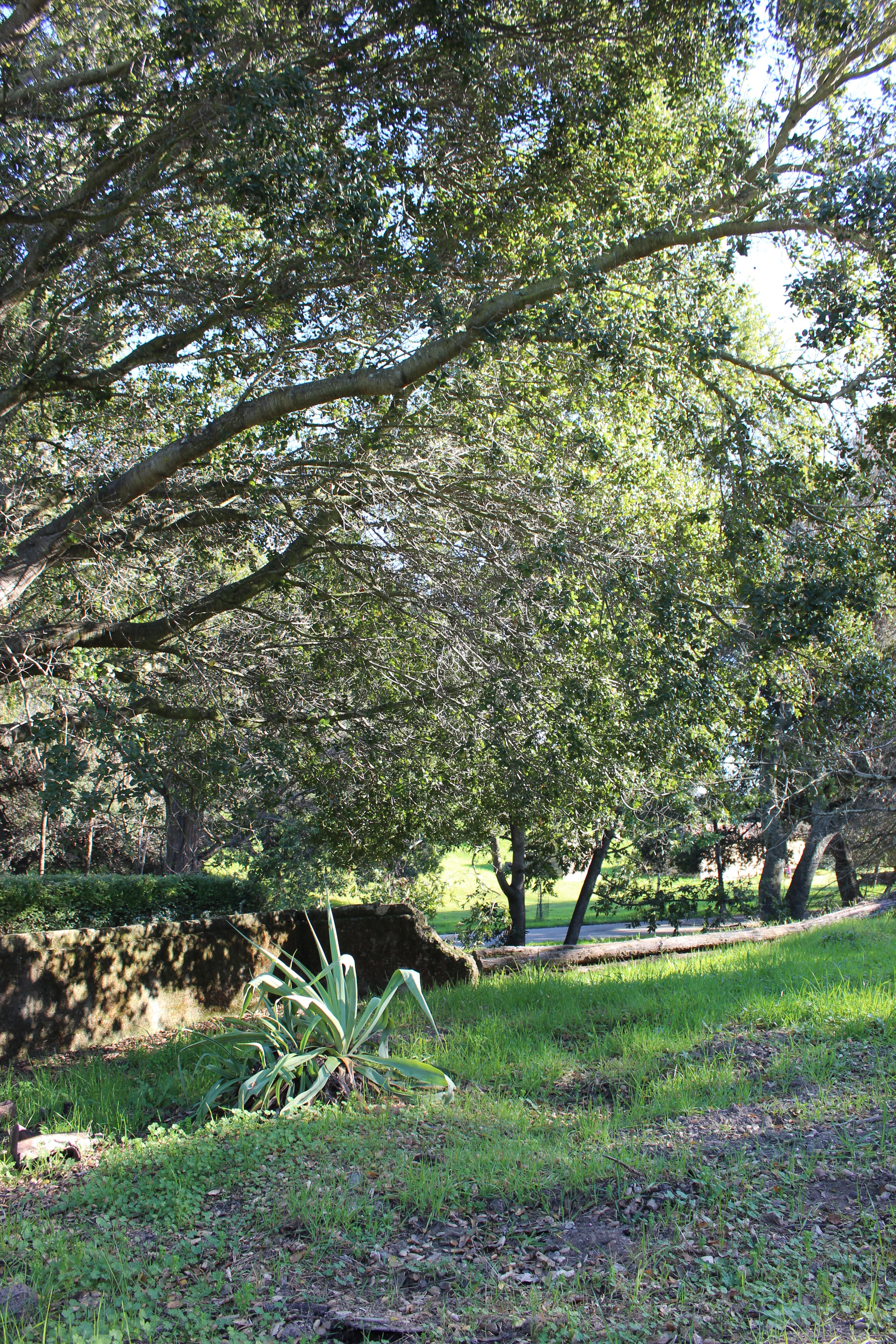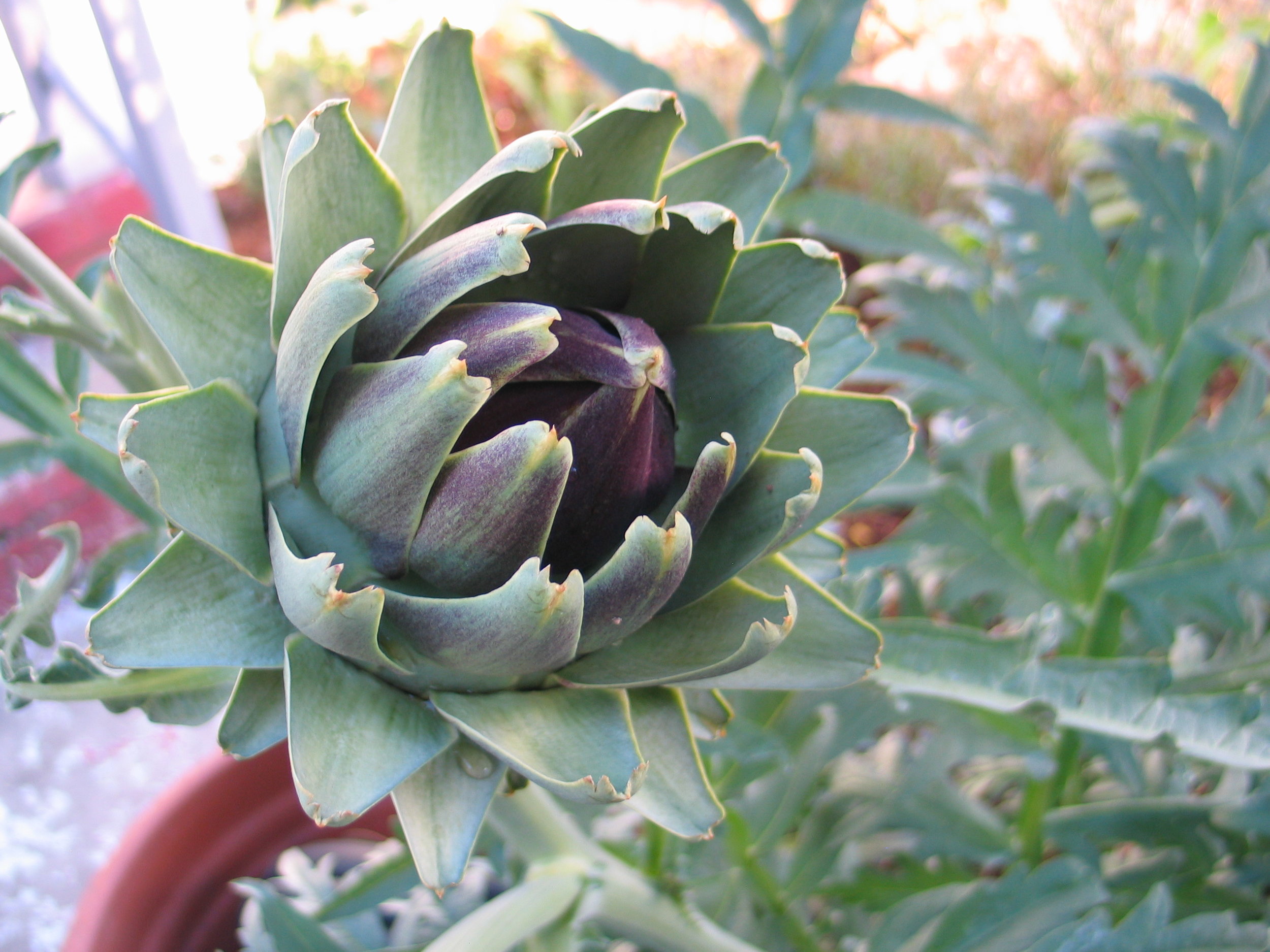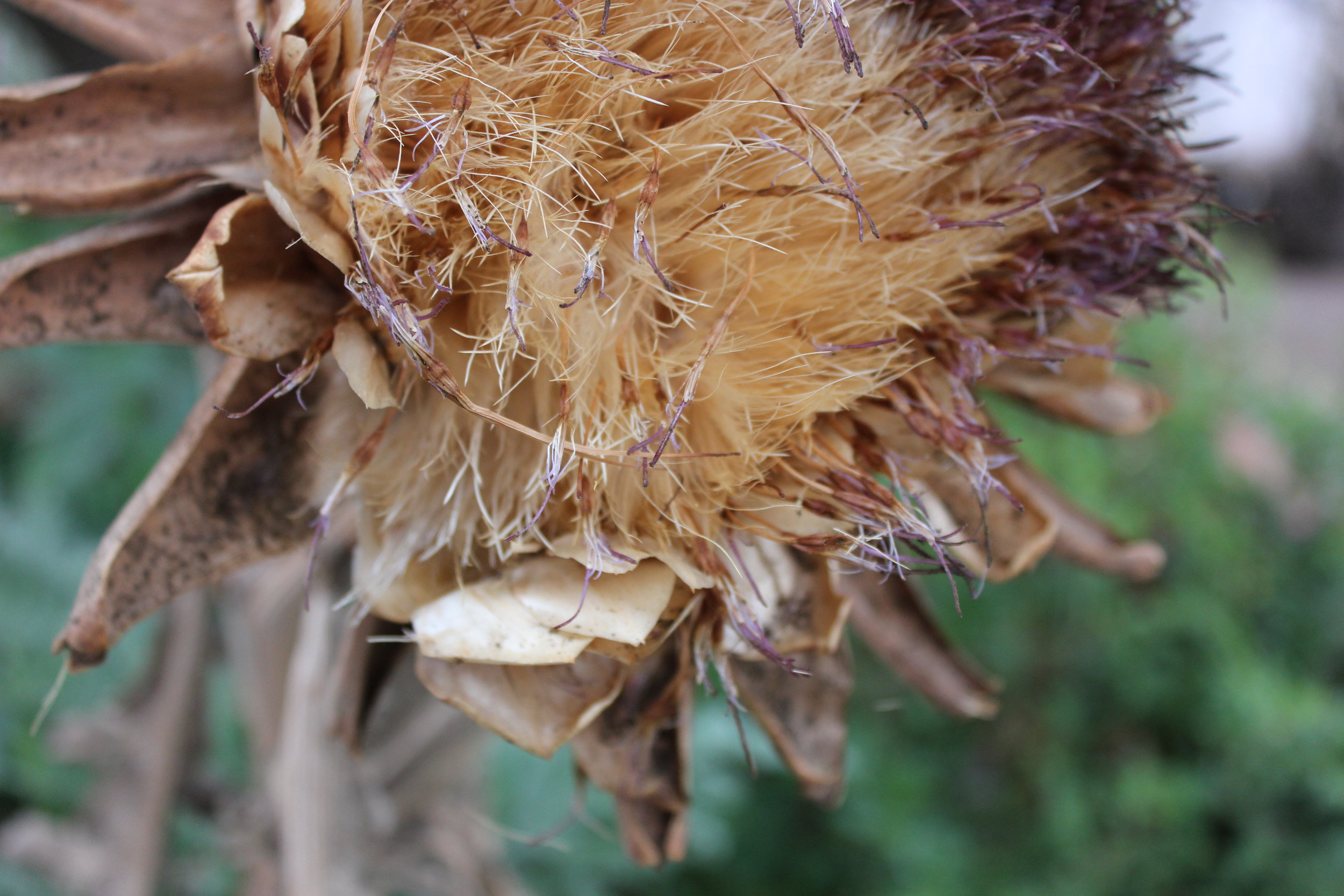You've heard that you should water trees deeply and infrequently, right? I take that approach a bit further and use it for everything - trees, perennials, roses, everything. I'm careful with my water anyway having grown up in Los Angeles during the 70's drought when we let our yellows mellow, removed or reduced lawns, and collected shower water.See, we're in for some serious growing pains while we struggle to understand and adjust to mandatory water restrictions now in 2015 - I don't need to repeat the advice, you already know it (ditch the lawn, add compost and mulch, etc). But what we need to be doing is more than just using less water, we need to use water more wisely - to help our plants fend for themselves better. I see water as a training tool and my plants as smart, but slow. They can't fetch and training them to do much of anything takes years.As of my last water bill, I'm down to 36 GPD (gallons per day) including landscaping. Before you bow in awe to this amazing feat, you should know that I irrigate my garden a little differently than most and I'm not watering anything I don't want to keep. Let the rest die, they're out of here anyway. Here's where I water differently: I bought a 15 gal. Magnolia 'Black Tulip' (that baby green tree in the background left-side). It is rated as having "moderate" water needs in Oakland by WUCOLS. Moderate isn't exactly water-wise, but I've got a theory..... and so far, so good. I planted the tree a year ago this month. At the same exact time, my client in Mill Valley had three planted (guess whose idea that was). Their landscape contractor did exactly what they usually do - they amended, fertilized, and watered the hell out of those trees. My client's trees bloomed and grew and leafed out beautifully, gained stature nicely. Mine didn't. Luckily for them, theirs are next to a lawn that I'm sure they'll keep as long as they can, where I have no lawn. Below is a better shot of mine last May (1 month after planting).I planted mine with a bit of compost, watered it in well that first day, and walked away. It looked fine for a while, then it got all stressed out and started dropping leaves. I watered it again, a nice soaking, and it threw out some new leaves. We did this all summer: I kept an eye on it, watering only when I found signs of stress in the leaves, but then not again until I saw more stress. It was nerve-wracking. The tree did not visibly thrive, and it sure as heck didn't get much bigger. I'm pretty sure it would slap me if it could.... but it survived. While it was dormant over winter and I held my breath to see how it would do come spring. This spring when it started blooming, I was delighted with how many (albeit smallish) flowers there were on my young tree, and now it is leafed-out for the season. I'll be doing the same this summer, soaking the presumably larger root-zone, but as seldom as possible. I'll also be adding more compost on top (not working it in, that's the worms' job) and maintaining a good layer of mulch over that.I believe that what I am doing will be better for my tree's long-term durability. I believe that I gave it reason to throw energy into its root system in search of water, and that I rewarded deep root growth instead of fast, exciting foliage and gains in stature. Over the winter, its root system likely continued to dive and while I watered, soaking further and further down but less and less often, we're working together to train this "moderate" water needs tree to survive more like a drought tolerant tree. Here it is today, not much bigger, but doing just fine:I don't water fast enough that it trickles off, doing by hand what irrigation designers call "cycle and soak", making sure that the water goes into the soil and nowhere else. I'm also taking advantage of the few light rains we had to water further than the rain itself went = deep watering every time.I can't tell others to do this, the tree looked like hell that first year of establishment and I think most people wouldn't watch closely enough nor would they enjoy the experience (even I was a bit nervous). We'll see how things go this summer, but I can tell you that I don't water much, maybe once a month? I avoid watering if it is overcast or cool outside. I look closely at my plants in the most stressful times - when it is blazing hot, sunny, and/or dry and windy. If I see stress, I'll water. If not, forget it. I'll keep you posted on how things go this summer.The most impressive thing, though, is what I noticed in putting together this post - look how much my roses LOVE this treatment - they get watered only when the tree gets watered and I have yet to see them look even a little stressed. You can see the change best between the second photo and the one above. They're the hybrid tea 'Stainless Steel' (my favorite). Here's the original one (now on the right in the photo above) blooming in my old garden in Alameda in 2010 and again in 2012:
BAD GARDENER!
I've been keeping busy in what feels like a perfect storm of absolutely inexcusable (insert many cuss words) BAD "gardening". I don't know what the heck happened, but the stars aligned and I've been doing nothing but evaluating problems, recommending that gardeners get fired, and interviewing new gardeners. I have three current projects dealing with this at the same time, and today a project I haven't even started working on yet became the fourth.This morning's text from my new client brought such sad news. She had the most charming Hong Kong Orchid (Bauhinia blakeana) tree and came home from work to find that it was absolutely butchered by the "gardeners". They were not directed to prune the tree, and I have to tell you - this has happened to more than one client where someone has butchered a tree without approval or permission! My client loves this tree and I'm working on finding someone to help us in directing its recovery from the abuse.Below you'll see the few photos I have of the tree - I was so charmed by it, I can't figure out why I didn't get better photos.It used to overhang the front patio that the living room looks out on - is focused on - but now I'm told that you can't even see the tree from inside anymore. If you are sensitive to gorey pictures, now is the time to avert your eyes:I warned you, don't say I didn't.SO - what the hell? Thing is, any idiot can call him/herself a gardener. There's no training required, and most people are happy enough to have someone else do the mowing that they don't worry about it - how hard can it be? But what many don't think about until it is too late is that those specimen plants can be responsible for a good up-tick in your property's valuation. New trees don't add value, but healthy, mature ones totally do!I will post again soon about some of the other issues with gardeners - but for now, may I just list these few things that every property owner should know:An Arborist is an educated, certified person who is held to certain standards of care and who can be reported for not upholding those standards. Hiring a tree service company does not mean an Arborist will be involved in your project, nor does it mean you'll get qualified advice. If you have an important tree, make sure you protect it with advice and evaluations from someone qualified to give them.A Consulting Arborist can help you diagnose problems or evaluate a tree, the American Society of Consulting Arborists has a great web page that lets you search for one near you: ASCA. They aren't the folks with the clippers, but they can tell you if a tree is in good health and stuff like that.There is no specific qualification for someone to do pruning. However, some arborists do work in hands-on ways or work for companies that do. To find these kinds of people, check out the International Society of Arboriculture, or ISA. The difference being arboriCULTURE as opposed to arborIST.The moral of this story is that everyone who hires or works with a gardener or a landscape maintenance company should have the conversation about doing unauthorized work. This is a huge no-no, and I'd like to make a law about it, but until that happens, we've got to look out for the trees ourselves. Well, us and the Lorax anyway.
The Surprising Dunsmuir Estate
I am so excited to tell you that I've been asked to serve on an advisory board for the Dunsmuir Estate! I'm told that this is the first advisory board since the City of Oakland took over care of the property, so I feel truly honored.I was just over there last Friday because I made an effort to remember to visit during their insanely restricted hours (it is an effort, even bank employees would drool over these hours!). I work from home not very far from this place and even still, I can't seem to get over there while they're actually open.... never-mind the times they should be open (imho) but aren't, like weekdays squeezed between major holidays and weekends (I tried to go last Black Friday for example). BUT, that's not the point I'm here to make.This place is a gem in the rough. Anyone who has read my blog before knows how much I enjoy visiting historic estates and gardens, but this one eluded me until a few months ago. SO, without further delay - a few photos from last Friday to celebrate my budding relationship with the folks who are working so hard to keep the place up and promote it. I'm plain ole thrilled about it.So above you see the Main House and the entry, ducks, fountain, and gazebo (drought? what drought?)....... and two benches with gobs of personality...... a couple of shots that I think exemplify the magic of the character of the place....... but I'll leave you with a shot of my favorite thing, the pool and pool house. I could do a whole post just on this one item, and I probably will, but it is such a magical, beautifully proportioned thing, I wish I had drawings of it to study, find out what it is about the space that is so magical, apply those ratios to my own work (even though I don't design by mathematical formula, I just want to "get" it and be able to replicate it). I dearly hope that this can someday be restored, but in the meantime, I'll stare at it and imagine what it must have been like.
Artichokes' Awkward Phase (so what?!)
Artichoke plants can be real stunners. Their soft, enormous, sculptural bluish foliage is a real treat in a garden, especially in contrast with more subdued looking plants. These big dudes can make a real statement. One of my practices as a professional (which sounds better than 'I can't go to a nursery without buying something') is test growing plants and watching what happens over time. This summer I trialed Zinnias, Artichokes, several ferns, Marigolds, Scabiosa, Cosmos, Calendula, several roses, Gardenias, Heucheras, a few grasses, Daphne, a handful of Penstemons, a Magnolia, an Albizia, Sweet peas, and Lupines among others (this list is the survivors).The Artichokes, though, held a lesson. Googling Artichokes didn't tell me much about them. I found oodles of photos of the flower buds (the bit we eat) and foliage, tons of recipes and so forth... I found websites about how to grow them, where to get them, I even watched a video about growing them, but in my searches and plodding through books, I did not find anything about their life cycle. The best information I found was in Golden Gate Gardening, which talks about how to grow them in decent detail, tells you what to do, but does not give a complete picture of what the plant is doing while you're busy taking care of it.So, darling readers - here are my chokes from their glorious youth through that first awkward phase:May 7th: Here they are a few weeks after I put them in the ground - I bought three 4" pots of them and also three clearance rack 2" pots of dying plants. All of them grew so FAST! There really isn't much point in spending a lot on an artichoke plant, the little sad ones will do just fine if you get them in the ground where they really want to be. Sorry, I did not record when I planted them nor did I take photos of the sad little dudes.July 8th: Two months later, I've got several flower buds starting (above).July 28th: I let a few flowers open just to follow what they do. Out of the six plants I grew, despite being in partial shade, I had more artichokes than I could possibly eat.Aug 1st: I had taken the chokes off one of the plants (delicious) and it repaid me by doing this. It is a sad looking stemmy misshapen thing. Welcome to the Awkward Phase. I know they're perennial, some say they're semi-perennial, living only 5-6 years, others claim they can live much longer. I don't give a rat's patoot when getting a replacement plant can cost less than buying an artichoke for dinner and they grow so well.September 25th: The stems and leaves continued to fade and look like total crapola (read: turn brown and sticky) until about mid-september when the next growing season's leaves began popping up at the base of the plant. I left the flower on to watch it go to seed, and seed it did! I was tracking these big globs of brown fluffy seeds into the house and they were blowing around the yard. Rather than let artichoke babies take over, I took this opportunity to finally break the old stems off most of the plants at their bases and chuck them in the green waste bin, I left one alone to do its thing for another two weeks, when I bought a new camera.... .... and in Mid-October, my new camera helped me get a better photo of the fluffy seeds on one plant and new foliage on another.So what is my point? Artichokes are cool. What is even cooler is how dynamic they are. Many people don't have the patience to let a plant do awkward unsightly things in their garden, and that's okay - but you can't really understand your plants unless you understand their lives. Books don't do enough, web-searches will give you tons of beautiful photos, but nothing compares to growing something and being observant.Thank you!!
Oh, Lantana, How You Vex Me!
The front of my new place is awash with purple Lantana (Lantana montevidensis). It is lovely stuff if you are both color blind (unless you're into this sort of purple, nothing wrong with that!) and an admirer of wildlife. There are butterflies, bees, spiders, and lizards all over it. It is absolutely marvelous for year-round blooming and needs no supplemental water once established (at least not here, I turned the irrigation off last fall).The flowers are the pepto bismol of purples - not my favorite, though maybe someday I will find a companion plant with a color that mitigates the pepto purple hue. Meh, maybe not. A dear friend of mine said that the overwhelming amount of purple Lantana in my garden made my place look like a retirement home.As much as I'd like to be able to retire (I'd still spend my time designing gardens - I love it that much), I am not ready to live in a dadgum retirement home! Talk about death by association; I can't look at it anymore without thinking about retirement homes. As if that wasn't bad enough, my lovely boyfriend thinks the foliage smells like poo (the flowers smell nice at night). Charming: a poo scented retirement home.Here's my vexation: as much as I intend to remove the Lantana and put in other stuff, it is happy, healthy, requires no water, and supports oodles of critters. So for now it stays.... providing food and shelter for all those bugs and lizards, but lookout, Lantana! You're living on borrowed time. Wanna know what I think might fill the space above? I'm considering a collection of spineless Opuntia that my friend Melinda sent me from Texas along with a few I've collected on my own here. The ones from Texas are rooting in the shed right now - cross your fingers that they all take!So there's my dilemma - removing the Lantana removes habitat, but goodness gracious, there's so danged much of it, I don't really like it, and the new design/plants aren't ready yet. Patience....




